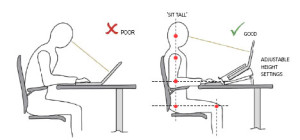(This is an example blog post I created so English 340 students could see the potential style of a blog post, and begin to create your own. To get started, log in and then click on “+ New” at the top of the page. You can write about almost anything you want related to tech, digital lit, Thoreau, etc. etc. But, let me know if you have blogger’s block, I have some ideas I can share!)
I began this post with a question: What would it look like for a woman to go into the woods, as Thoreau did? What would it look like for a woman to join network marketing site Wake Up Now like Damien?
I don’t believe there are many popular narratives offering that possibility, or exploring that outcome. The only literary option that came to mind was Eat Pray Love, but one could argue that the protagonist’s ability to drop everything and travel the world puts her in a privileged

position not representative of all women. So, what happens when a regular-Joe lady decides to escape our capitalist rat-race of a society in a search to find herself?
Consider the world of gaming. Virtual reality scenarios could be considered a modern-day escape from the world. They don’t make you a living or offer the possibility of sustaining yourself financially, so I suppose you never truly leave the rat-race, but they offer a temporary escape into another world where less is at stake, and you can play out scenarios impossible in real life. Women are essentially barred from this space in a number of ways, including misogynistic and violent story lines and, maybe more importantly, actual harassment and threats. In the Gamergate controversy of 2014, gamers coordinated to threaten women involved in gaming, including Anita Sarkeesian, the creator of Feminist Frequency, a site dedicated to exploring “representations of women in pop-

culture narratives.” Sarkeesian received really upsetting death threats (and more), but she continued to speak about about representation of women in video games, and about cool+smart digital humanities topics such as anonymity, narrative control, and questions of access.
So, when women try to enter spaces offering escape, they usually aren’t safe. This is sad, because even Thoreau acknowledges that a retreat to the woods isn’t for everyone, and there are a lot of ways to find oneself in this world. Maybe the whole project of finding oneself is meant for the privileged, and is therefore totally flawed, or maybe the system at large people are escaping from should be fixed rather than run from, or maybe we need to work harder to ensure open access, as it were, in these escape scenarios….
I think it was Allison who said in class that she felt Thoreau came from a position of great privilege. And I agree. And in the end, I think the question we as digital humanists and admirers of Thoreau need to ask is, how can we engage with this work responsibly? How can we create safe spaces for everyone in comment sections, in games, on social media, or surrounding digital texts?
One heartening example: Remember our class discussion about Storify? Like Darby described in class, it’s a place of narrative control, where people literally embed things into narrative form. Another oft-harassed Twitterer is Black Girl Dangerous. She uses Storify to save whole twitter conversations as they happen, so even if people go back and delete comments, or make false claims about who said what first, she has archival proof of what happened and how. This is one way people venture into escapist places (Twitter) and use digital humanist-style tools to work toward safety in those spaces.
Any more examples of online harassment? Ideas for remedies? Arguments or agreements? Comment below!







